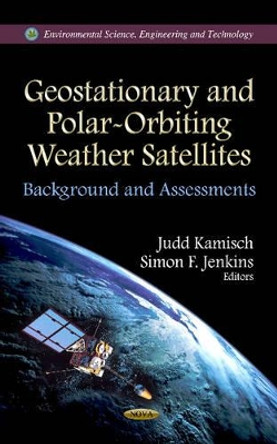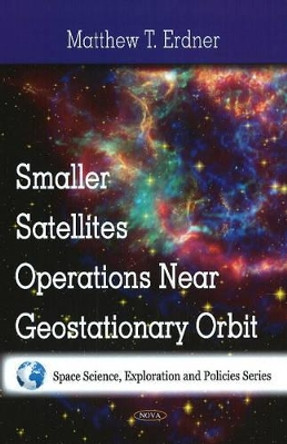Description
About the Author
Dr. Steven Goodman, now retired from NOAA, was the Senior Program Scientist for the GOES-R Program from 2007-2017. During that time, he served as the primary science authority for the nation's next generation geostationary environmental satellite program, a joint agency development managed by NOAA and NASA. His research interests include the global distribution and variability of thunderstorms, lightning and precipitation physics, and the application of space-based remote sensing to improve the short-range forecasting of severe storms. Following a 20-year career with NASA and prior to joining the GOES-R Program Office, he served as the Deputy Director of the NESDIS Office for Satellite Research and Applications and as the Acting Deputy Director for the Joint Center for Satellite Data Assimilation. He is a past recipient of the NASA Medal for Exceptional Scientific Achievement for his research on severe storms and a Fellow of the American Meteorological Society. Tim Schmit is at the Advanced Satellite Products Branch within NOAA's NESDIS Center for SaTellite Applications and Research (STAR) located in Madison, WI (the "birthplace of satellite meteorology"). Tim received his Bachelors and Masters degrees from the University of Wisconsin-Madison. Tim supports both the current GOES (sounder and imager) and the GOES-R (mostly the next generation advanced imager, and to a lesser extent advanced geostationary sounders). Tim's experience with satellite data and processing covers a number of areas, including calibration, visualization, simulations and algorithms for processing satellite data into meteorological/environmental information and user readiness and training. Tim has extensive experience with data and deriving products from the current GOES imager and sounder data, including the check-out of GOES-8 through 15. When Tim began working on the ABI in 1999, it only had 8 spectral bands, yet a long list of requirements. It now has 16 bands. Tim's claim to fame is that he has been working on GOES-R longer than any other current NOAA employee. Tim is the co-chair of both the Imagery and Soundings Algorithm Working Group (AWG) teams and has long been communicating the benefits of the ABI. Tim received the Department of Commerce Gold medal for 'outstanding efforts in orchestrating the use of retired geostationary weather satellites for improved coverage of South America'. In 2011, he won the T. Theodore Fujita Research Achievement Award from the National Weather Association (NWA) for 'excellence in promoting and extending the use of satellite data within the operational community currently and in the future.' Tim was a 2018 finalist for the Samuel J. Heyman Service to America Award and was recently elected a Fellow of the American Meteorological Society. Jaime Daniels currently serves as the Program Manager for the GOES-R Algorithm Working Group (AWG) and is the lead of the GOES-R AWG Winds Application Team responsible for the development of the GOES-R ABI derived motion wind and hurricane intensity product algorithms. Over his 30 years at NESDIS/STAR, he led, coordinated, and conducted research to develop, demonstrate, and validate new and/or improved level-2 product algorithms for a number of domestic and international geostationary and polar satellite systems. Between 2008 and 2016 he served as a co-chair of the International Winds Working Group (IWWG) which is one of four international science working groups belonging to the World Meteorological Organization (WMO)'s Coordination Group for Meteorological Satellites (CGMS). He currently serves as the CGMS Rapporteur to the IWWG. Robert J. Redmon received a D.B.S. in Electrical Engineering and Computational Mathematics from the University of California, Riverside in 1998, a M.S. in Electrical Engineering from the University of Notre Dame in 2000 and a PhD in Aerospace Engineering Sciences from the University of Colorado, Boulder in 2012. His activities within NOAA's National Centers for Environmental Information (NCEI) Solar and Terrestrial Physics section have included developing radar systems; studying auroral processes, and magnetic fields; calibrating space-borne magnetometers; and investigating satellite anomalies. He recently published a paper exploring space weather impacts during the 2017 hurricane season.
Book Information
ISBN 9780128143278
Author Steven J. Goodman
Format Paperback
Page Count 306
Imprint Elsevier Science Publishing Co Inc
Publisher Elsevier Science Publishing Co Inc
Weight(grams) 790g







